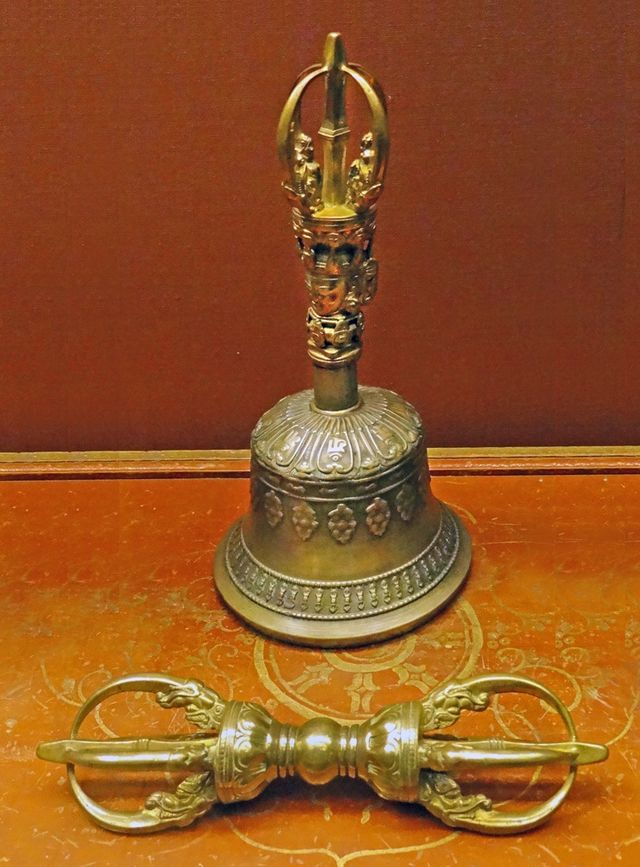
Vajrayana
Indian Buddhist tantric tradition / From Wikipedia, the free encyclopedia
Dear Wikiwand AI, let's keep it short by simply answering these key questions:
Can you list the top facts and stats about Vajrayana?
Summarize this article for a 10 year old
Vajrayāna (Sanskrit: वज्रयान; lit. 'vajra vehicle'), also known as Mantrayāna ('mantra vehicle'), Mantranāya ('path of mantra'), Guhyamantrayāna ('secret mantra vehicle'), Tantrayāna ('tantra vehicle'), Tantric Buddhism, and Esoteric Buddhism, is a Buddhist tradition of tantric practice that developed in Medieval India and spread to Tibet, Nepal, other Himalayan states, East Asia, and Mongolia.

Vajrayāna practices are connected to specific lineages in Buddhism, through the teachings of lineage holders. Others might generally refer to these texts as the Buddhist Tantras.[1] It includes practices that make use of mantras, dharanis, mudras, mandalas and the visualization of deities and Buddhas.
According to contemporary historical scholarship, Vajrayāna practice originated in the tantric era of medieval India (c. the 5th century CE onwards). However, traditionally, the adherents and texts of Vajrayāna claim these teachings have been passed down by an unbroken lineage going back to the historical Buddha (c. the 5th century BCE) or to other mythical Buddhas and bodhisattvas (e.g. Vajrapani).[2]
According to Vajrayāna scriptures, the term Vajrayāna refers to one of three vehicles or routes to enlightenment, the other two being the Śrāvakayāna (also known pejoratively as the Hīnayāna) and Mahāyāna (a.k.a. Pāramitāyāna).
There are several Buddhist tantric traditions that are currently practiced, including Tibetan Buddhism, Chinese Esoteric Buddhism, Shingon Buddhism and Newar Buddhism. Historically, there were also other esoteric Buddhist traditions, such as that of maritime Southeast Asia, which are no longer practiced today.